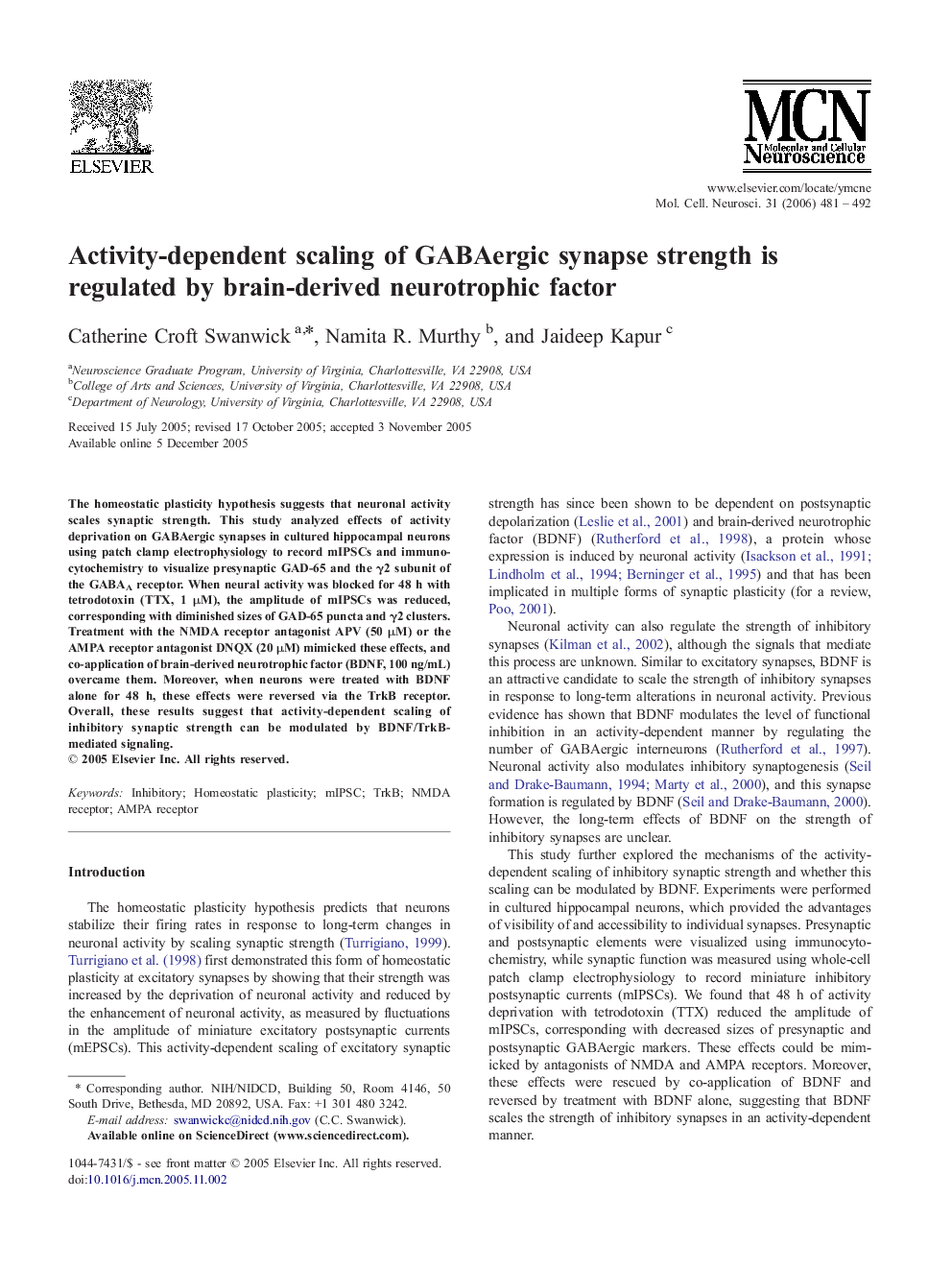| Article ID | Journal | Published Year | Pages | File Type |
|---|---|---|---|---|
| 2199382 | Molecular and Cellular Neuroscience | 2006 | 12 Pages |
The homeostatic plasticity hypothesis suggests that neuronal activity scales synaptic strength. This study analyzed effects of activity deprivation on GABAergic synapses in cultured hippocampal neurons using patch clamp electrophysiology to record mIPSCs and immunocytochemistry to visualize presynaptic GAD-65 and the γ2 subunit of the GABAA receptor. When neural activity was blocked for 48 h with tetrodotoxin (TTX, 1 μM), the amplitude of mIPSCs was reduced, corresponding with diminished sizes of GAD-65 puncta and γ2 clusters. Treatment with the NMDA receptor antagonist APV (50 μM) or the AMPA receptor antagonist DNQX (20 μM) mimicked these effects, and co-application of brain-derived neurotrophic factor (BDNF, 100 ng/mL) overcame them. Moreover, when neurons were treated with BDNF alone for 48 h, these effects were reversed via the TrkB receptor. Overall, these results suggest that activity-dependent scaling of inhibitory synaptic strength can be modulated by BDNF/TrkB-mediated signaling.
